Congratulations on welcoming a new puppy into your family! A crucial aspect of raising a well-behaved and happy dog is finding the perfect puppy crate. This guide will help you navigate the world of puppy crates, ensuring that you make the best choice for your furry friend’s size, comfort, and growth. Let’s embark on this journey together and finding the right puppy crate for your beloved pup!
Short Summary
- A sturdy, well-ventilated wire crate is essential for crate training a puppy and providing it with a secure environment.
- Consider factors such as gender, breed size, age, and temperament when selecting the ideal size of your pup’s crate.
- Ensure successful crate training by providing accessories like bedding materials and toys for comfort & enrichment. Upgrade to larger crates if needed.
Puppy Crate Essentials
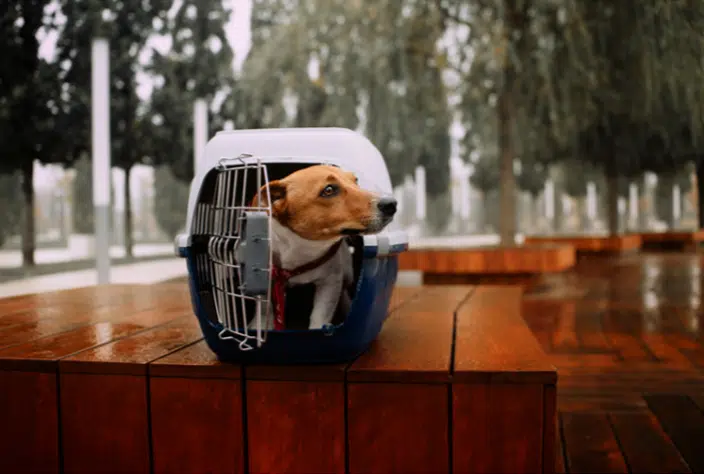
Finding The Right Puppy Crate
A dog’s crate serves as a sanctuary, allowing your furry companion to rest and recuperate in a secure environment. Selecting an appropriately sized dog crate ensures that your puppy feels content and safe in their dog’s crate. While choosing a crate, consider its durability, ventilation, and ease of cleaning. Wire crates are a popular choice due to their durability and versatility.
But, how does cage training benefit your pup? Crate training helps to establish a routine for your pup, providing them with a safe space to play.
Read how to crate train a puppy step by step here
Crate Training Benefits
Crate training offers a multitude of advantages. It provides a secure and comfortable environment for puppies to retreat when they feel overwhelmed, which is particularly important for small breeds like Shih Tzus. Additionally, crate training facilitates housebreaking by teaching puppies to restrain themselves from eliminating until they’re taken outside. Active breeds like Australian Cattle Dogs benefit from the structure and routine this method offers.
Furthermore, cage training helps develop self-control, preventing destructive behavior at home – a godsend for strong-willed breeds like the bull terrier. Now that we understand the benefits, let’s dive into the features of different puppy crates.
Puppy Crate Features
When selecting a puppy crate, size is a crucial factor. The cage should be spacious enough for your puppy to stand up, turn around, and lie down comfortably. For instance, a Toy Fox Terrier would require a smaller cage than a larger breed. The material also plays a significant role in your decision. Wire crates are durable, while plastic crates are typically easier to clean and better for travel. Wooden crates may look better in your living room.
Lastly, consider the ease of assembly. Many wire dog crates are designed for quick setup and takedown, making them a convenient choice.
Now that we’ve covered the essentials, let’s discuss choosing the ideal size for your puppy’s crate.
Choosing the Ideal Size for Your Puppy’s Crate
To choose the perfect crate size, consider factors such as gender, potential mixed ancestry, age, and temperament. A crate that is 6” longer than your dog’s body and 6” taller than its shoulder height is recommended. Providing too much space can hinder the crate training process by making your puppy feel less secure and more likely to potty in the crate.
So, how do you measure your puppy and make breed-specific recommendations?
Measuring Your Puppy
Measuring your puppy is essential to determine the right crate size. Use a tape measure to figure out your puppy’s length and height. When measuring your puppy’s length, add the complete length measurement to one-half of the arm length measurement. To accommodate your puppy’s growth, measure their expected adult size and choose a crate that will fit them when they’re fully grown, allowing an additional 6″ on each side for comfort.
Rule of Thumb Recommendations
Breed-specific recommendations for dog crate size can be helpful. For example:
- Canines that weigh up to 20 pounds would benefit from 19″ dog crates
- Canines that weigh up to 20-30 pounds would benefit from 24” dog crates.
- Canines weighing between 30-40 pounds would require 30” dog crates.
- Dogs weighing between 40-70 pounds would require 36″ dog crates
- Dogs weighing between 70-90 pounds would need 40” crates.
- Dogs weighing greater than 90 pounds would need 48″ crates
Keep in mind that not all dogs conform to the breed rule of thumb and that gender plays a large role in a dog’s size.
The smallest size crate, the X-Small 19” Crate, is also suitable for small breeds and puppies, as well as for transporting small animals like cats, rabbits, guinea pigs, and chickens.
Now that we know how to choose the right size, let’s delve into the different types of puppy crates available.
Types of Puppy Crates
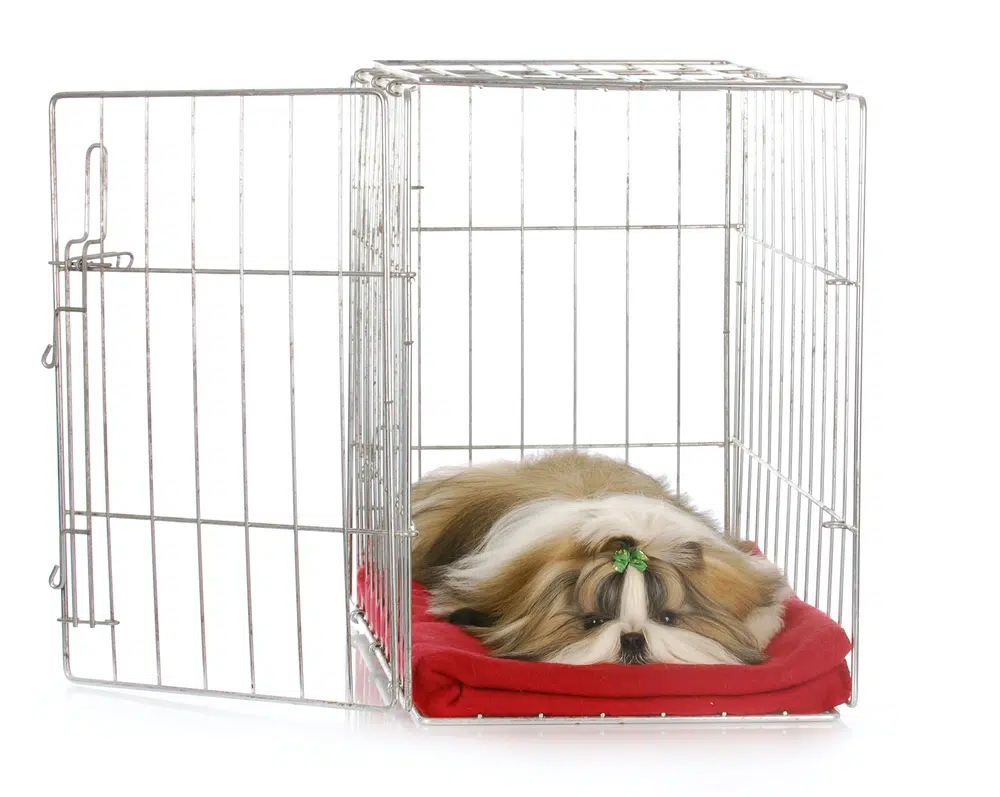
Finding The Right Puppy Crate
There is a wide variety of puppy crates to choose from, including:
- Wire crates: sturdy and versatile
- Plastic crates: lightweight and easy to clean
- Soft crates: portable and collapsible
- Furniture-style crates: blend in with home decor
Each type of cage offers unique benefits and drawbacks to consider.
Soft crates are portable and easy to set up, and furniture-style crates blend seamlessly into your home decor. Let’s take a closer look at each type.
Wire Dog Crates
Wire dog crates are constructed of metal and are known for their durability and versatility. They often come with removable floor pans and dividers, making them an excellent choice for puppies that are still growing. A wire cage also provides proper ventilation and allows your dog to observe their surroundings while feeling secure.
They are suitable for most canines, including pups and dogs that are being house trained. This makes them a great choice for owners who are looking for a secure and comfortable environment for their pets.
Plastic Dog Crates
Plastic dog crates are lightweight, easy to clean, and provide a secure and comfortable environment for puppies, particularly for travel. They come in a variety of sizes and colors, making them a popular choice for many dog owners. The enclosed space of a plastic cage creates a den-like atmosphere, promoting a sense of security for your puppy.
Proper ventilation and latching doors ensure that your puppy remains safe and comfortable inside the cage.
Soft Dog Crates
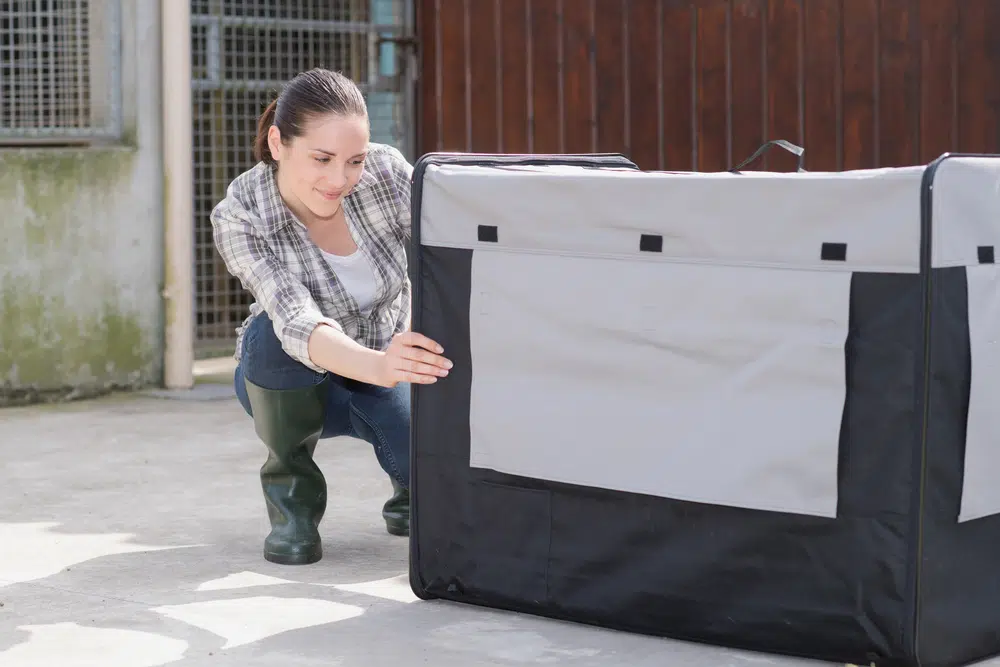
Finding The Right Puppy Crate
Soft dog crates are lightweight and easy to assemble, making them ideal for travel or temporary use as a pet carrier. Their portability and easy setup are perfect for dog owners who are frequently on the go or need a temporary dog kennel solution.
However, it’s important to ensure that the crate is the appropriate size for your dog and is made of durable materials, as well as ensuring that your dog is comfortable in the crate.
Dog Crate Furniture
Furniture-style dog crates are typically constructed of wood and feature a solid top that can be utilized as an end table or accent table. These crates blend seamlessly into your home decor while serving a functional purpose. Examples of furniture-style dog crates include the New Age Pet ecoFLEX Crate & End Table, which combines style and function to create a cozy home for your pup.
Now that we’ve explored different crate types, let’s discuss some essential accessories to enhance your puppy’s crate experience.
Puppy Crate Accessories
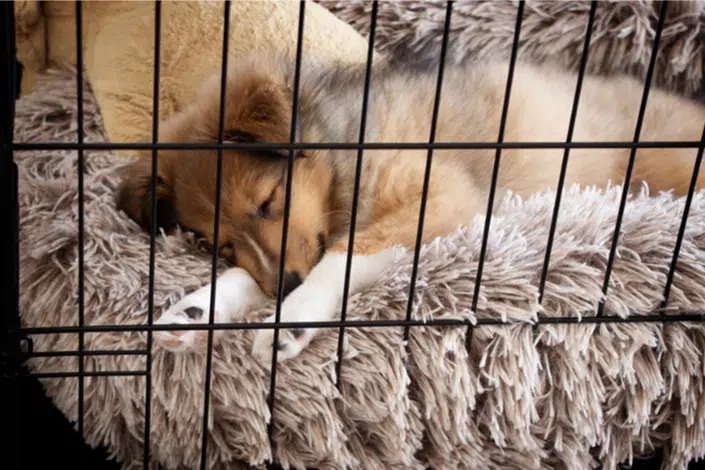
Finding The Right Puppy Crate
To make your puppy’s crate a comfortable and inviting space, consider adding the following accessories:
- Bedding: Ensures your puppy stays warm and cozy
- Toys and enrichment items: Keep them engaged and mentally stimulated.
- Feeding and hydration accessories: Guarantee that your puppy receives the necessary nourishment in their crate while minimizing mess and stress.
Let’s take a closer look at each accessory type. Bedding should be soft and comfortable, and should be changed regularly to keep it clean.
Comfortable Bedding
Providing comfortable bedding in your puppy’s crate is crucial to their well-being. The most suitable bedding materials include:
- Cotton Bedding
- Towels
- Blankets
These materials should be easy to clean and provide comfort for your puppy. A cozy surface will help your pup feel more at ease and reduce any anxiety they may experience in their crate.
Toys and Enrichment
Keeping your puppy entertained and mentally stimulated is essential for their overall happiness and well-being. Crate-safe toys and enrichment items can help achieve this goal. Examples of suitable toys for puppies include:
- Nylabone Just for Puppies Bacon-Flavored Key Ring
- Kong: Wild Knots Bear
- KONG Puppy Binkie
- Outward Hound Nina Ottosson Puppy Hide N’ Slide
These toys are durable and suitable for teething puppies, including teacup Yorkshire terrier and toy poodle breeds, ensuring they stay engaged and content in their cage.
Feeding and Hydration
Ensuring your puppy has access to food and water while in their cage is essential for their well-being. Attachable bowls or dispensers can help provide nourishment and hydration for your pup. High-quality wet puppy food brands such as Taste of The Wild, Canidae Under The Sun, and Rachael Ray Nutrish Natural provide nutritionally balanced meals for developing puppies. Additionally, hydrating treats like strawberries, cucumber, and seedless watermelon can help keep your puppy hydrated.
Click here for our recommendations on the best food for puppies!
Now let’s learn how to adjust the crate size as your puppy grows.
Adjusting Crate Size as Your Puppy Grows
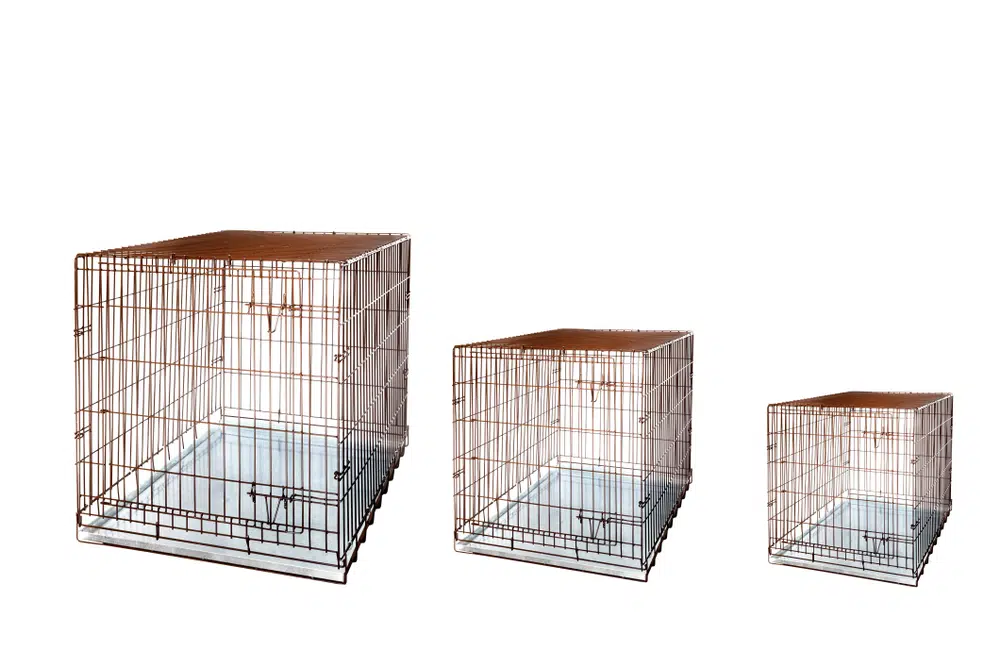
Finding The Right Puppy Crate
As your puppy grows, it’s important to adjust their cage size to accommodate their changing needs. Dividers can be used to modify the size of the cage, ensuring that your puppy has enough space while still feeling secure.
But how can we use dividers and upgrade to a larger crate when necessary?
Using Dividers
Wire crates often come with dividers, allowing you to adjust the crate size as your puppy grows. Dividers like the MidWest Homes for Pets Newly Enhanced Single & Double Door iCrate Dog Crate with Divider Panel, and Impact Puppy Divider are adjustable and easy to customize.
By using dividers, you can ensure that your puppy’s crate remains the appropriate size throughout their growth, making crate training more successful and comfortable for your pup.
Upgrading to a Larger Crate
When your puppy begins to show signs of discomfort or is unable to freely stand, stretch, and rotate in their current crate, it’s time to upgrade to a larger size. To determine the appropriate crate size, consider your puppy’s current size and potential growth, ensuring that the crate is not too large.
By upgrading to a larger crate when necessary, you can maintain your puppy’s comfort and ensure their continued success in crate training.
Tips for Crate Training Success
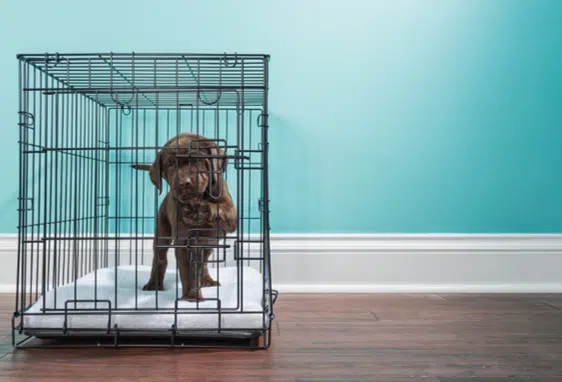
Finding The Right Puppy Crate
Crate training is a valuable tool for raising a well-behaved and content puppy. To ensure success, follow these steps:
- Gradually introduce your puppy to the crate.
- Use positive reinforcement, such as treats and praise, to encourage your puppy to enter and stay in the crate.
- Provide comfortable bedding and toys inside the crate to make it a cozy and inviting space.
- Position the crate in a quiet, comfortable area of your home to help your puppy feel at ease.
By following these steps, you can help your puppy become comfortable and happy in their crate.
Remember that patience and consistency are key to successful cage training. With dedication and love, you’ll create a cozy and secure den for your beloved pup.
Summary
In conclusion, finding the right puppy crate is essential for your puppy’s comfort, safety, and successful crate training. By considering factors such as size, material, and crate type, you can make the best choice for your furry friend. Don’t forget to add accessories like comfortable bedding, toys, and feeding items to enhance your puppy’s crate experience. Remember to adjust the crate size as your puppy grows, and follow our tips for successful crate training. With the right cage and consistent training, you’ll create a cozy haven for your pup and foster a strong bond between you both.
Frequently Asked Questions
1. Should I crate my puppy every night?
Crate training is necessary when your dog is a puppy, as it helps them learn to sleep through the night and control their bladder and bowels. Additionally, kennels are excellent for times when no one can be home to supervise your puppy.
Therefore, you should crate your puppy every night.
2. How do you crate train a puppy at night?
To crate train your puppy at night, find the right spot for the cage, avoid food and water before bedtime, wear your puppy out with play before bed, go outside immediately before bed, don’t play with your puppy at night, wake up before your puppy, and be consistent and patient.
To find the right spot for the crate, make sure it’s in a quiet area of your home. Avoid feeding your puppy and giving them water before bedtime, as this can lead to accidents in the cage. Wear your puppy out with play before bed, as this will help them settle down and sleep. Go outside immediately before bed, as this will help your puppy understand.
3. Is it OK to crate a dog while at work?
It is not recommended to keep your dog in a crate for more than a couple of hours during the day while you are at work. Make sure that your dog is fully potty trained before returning to the office so they do not have to stay in the crate.
4. What factors should I consider when choosing a puppy crate?
When selecting a puppy crate, think about size, material, and assembly complexity to make sure it suits your pup’s needs.
Consider the size of the crate. Will it be big enough for your pup to move around comfortably? Is it too big, so that your pup will feel overwhelmed?
Think about the material of the lecture.
Interesting Reads:
Is Crate Training Necessary? Understanding Crate Training Basics

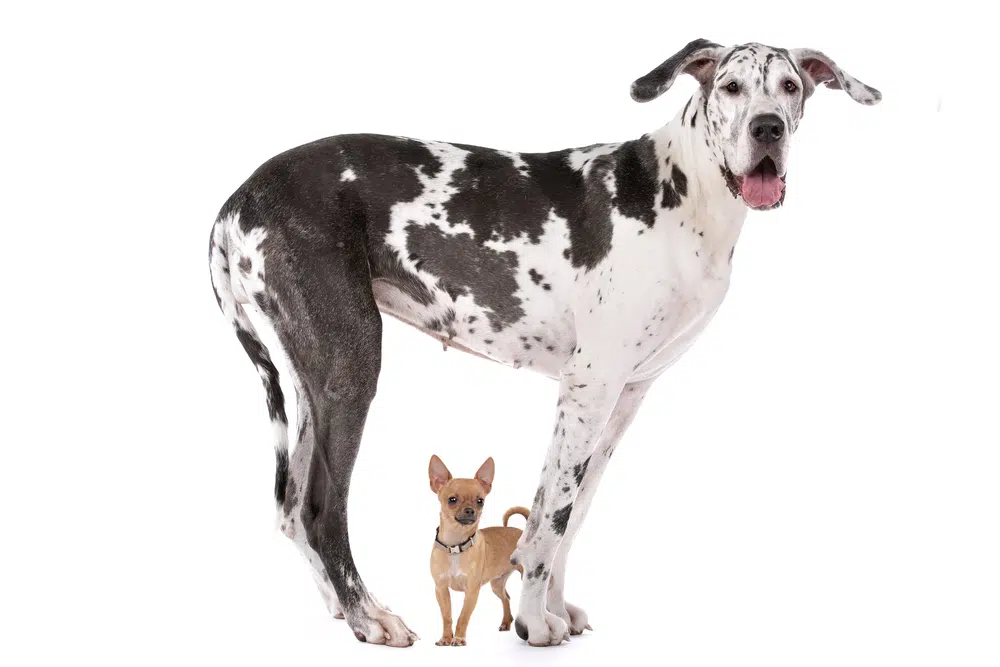
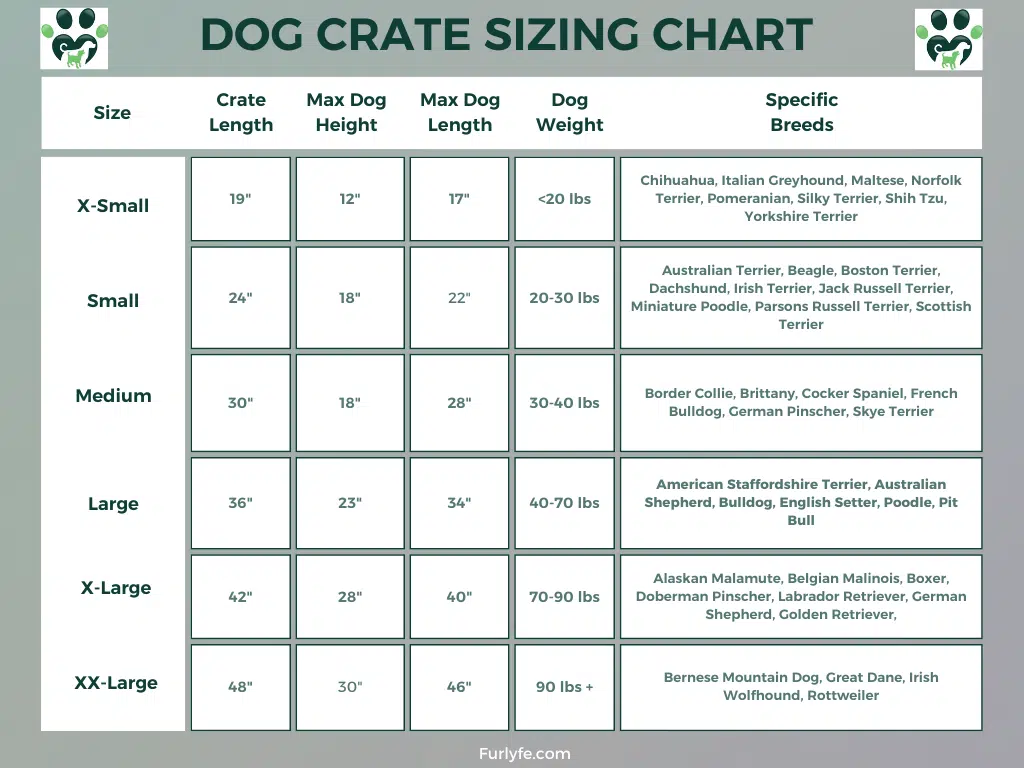



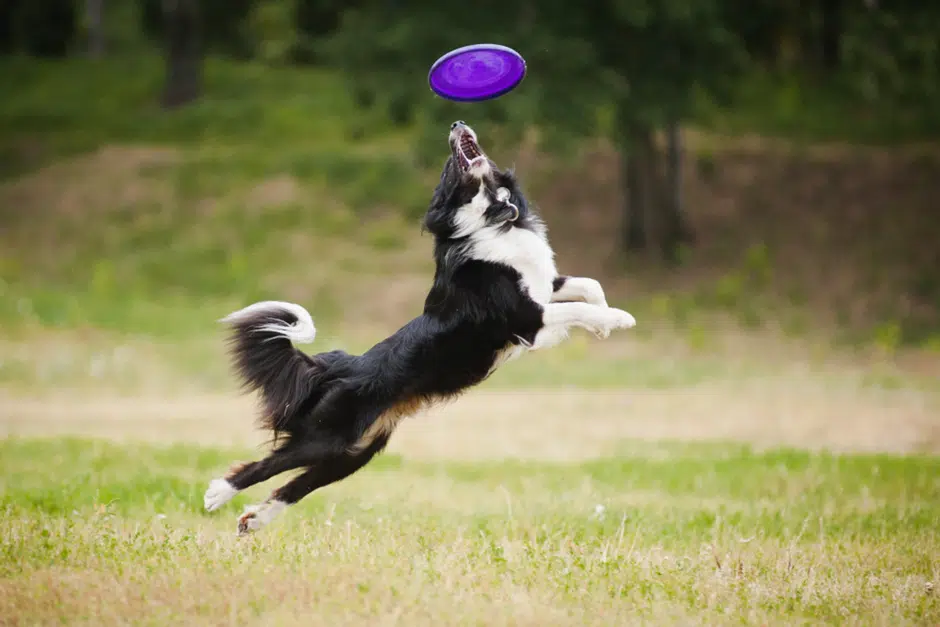
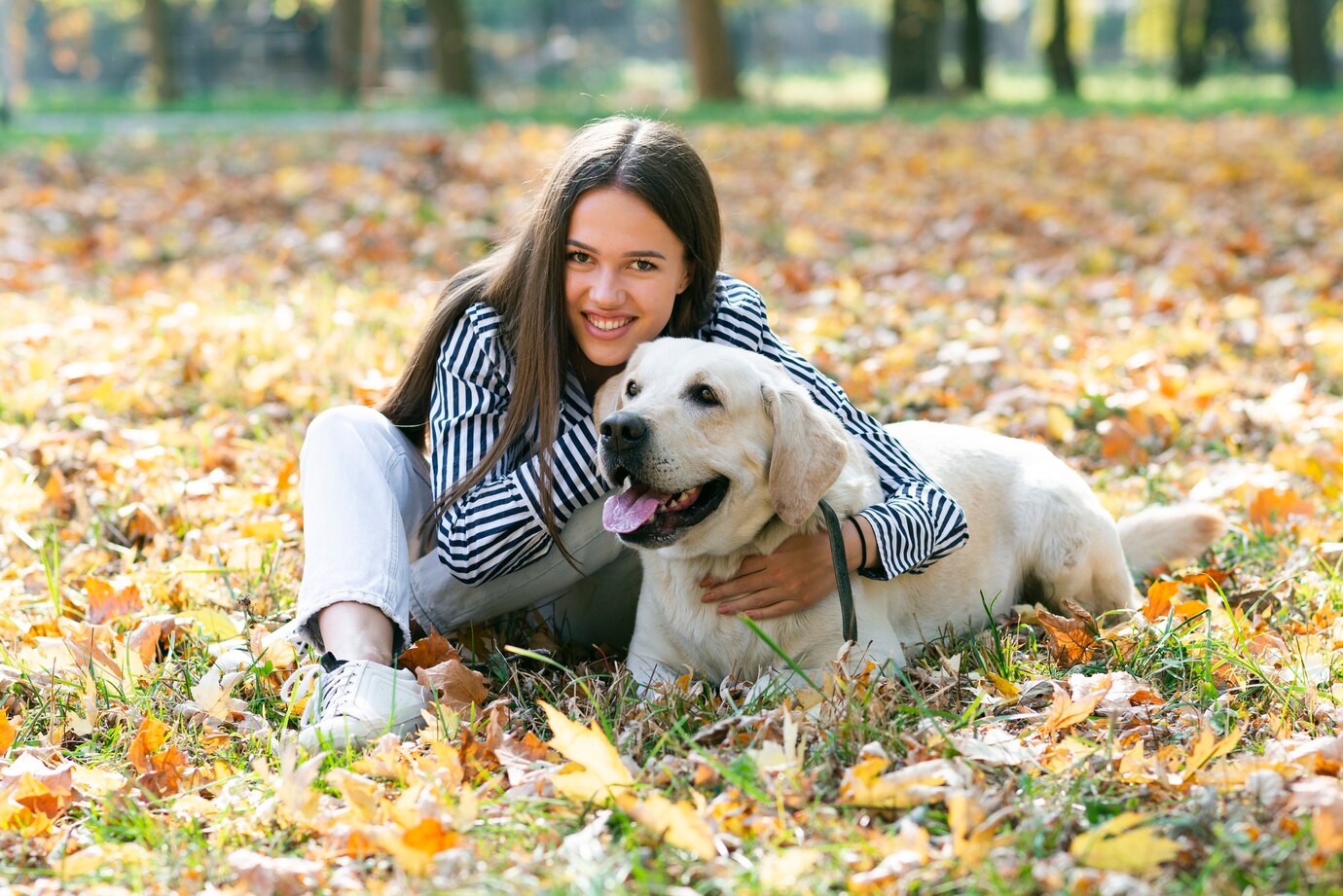
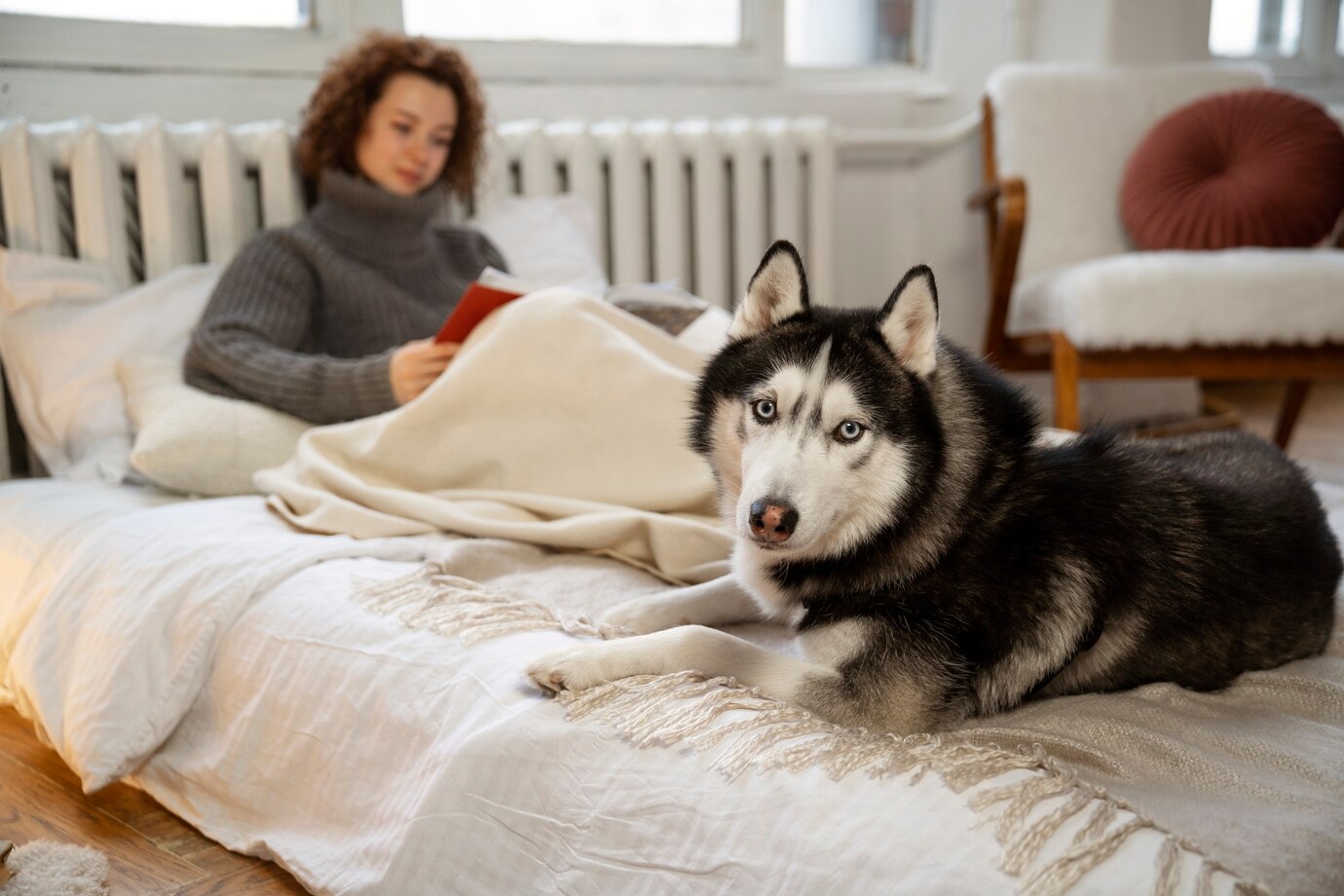
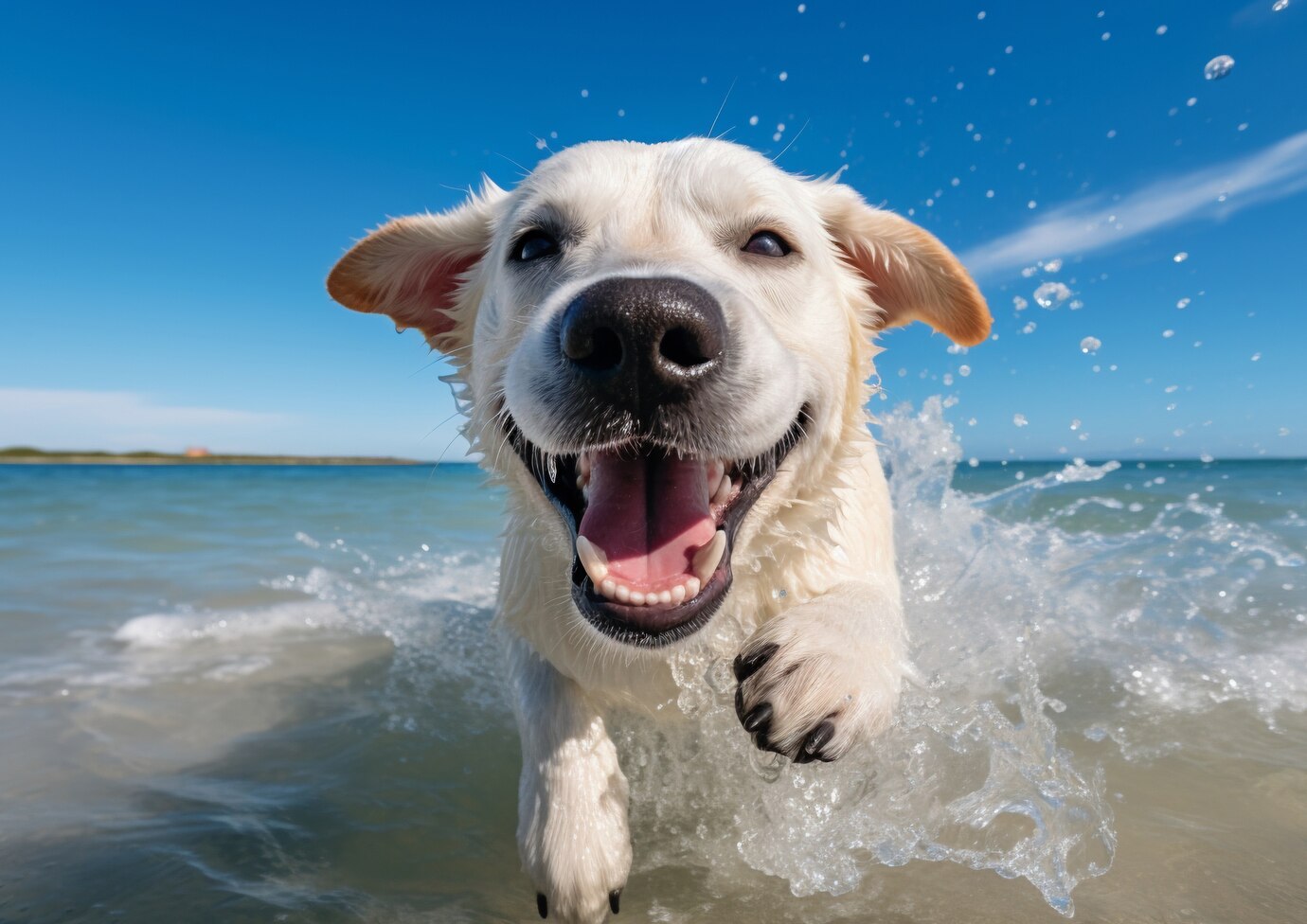


Get involved!
Comments